



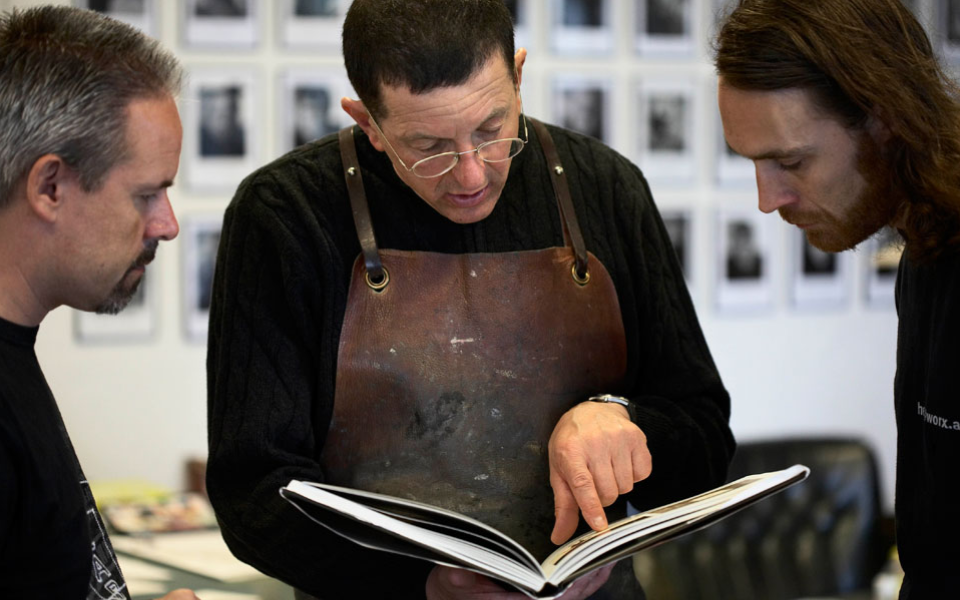
Established in 1959, Edition Copenhagen is one of the leading lithographic workshops in the world. The 1000m2 workshop and gallery space is located in a typically characteristic building in the Christianshavn district of Copenhagen. Edition Copenhagen has three partners; Rasmus Urwald, Dannie Vieten and Peter Wissing Sørensen. Their vision is to create a safe haven for the artists, to continue developing the printing process and sustain the knowledge of lithography as a unique tool of artistic expression.
Each year Edition Copenhagen invites a number of international and Danish artists to create original lithographs within the workshop.
Most of the invited artists have exhibited widely in leading galleries, contemporary art centres and museums around the world. As well as inviting established artists, Edition Copenhagen also aims to work with new and upcoming artists. Throughout the year, Dannie Vieten and Peter Wissing travel extensively to present the lithographic editions to Prints and Drawings Collections in museums as well as to corporate and private collectors. The personal presentation of the artworks is important. On this website, you can experience all the artists that are currently being published by Edition Copenhagen.
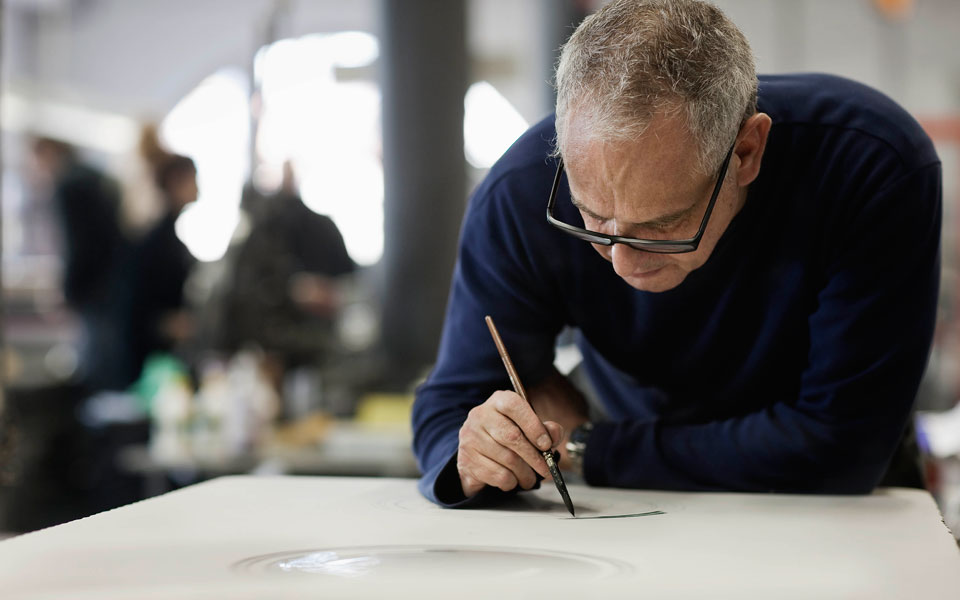
The original lithographic prints published by Edition Copenhagen are all made in the workshop by the artists. The printing process in the workshop is performed according to traditional techniques dating back to the 18th century.
Only one artist works in the workshop at a time and is supported by three expert lithographers with the finest technical skills.
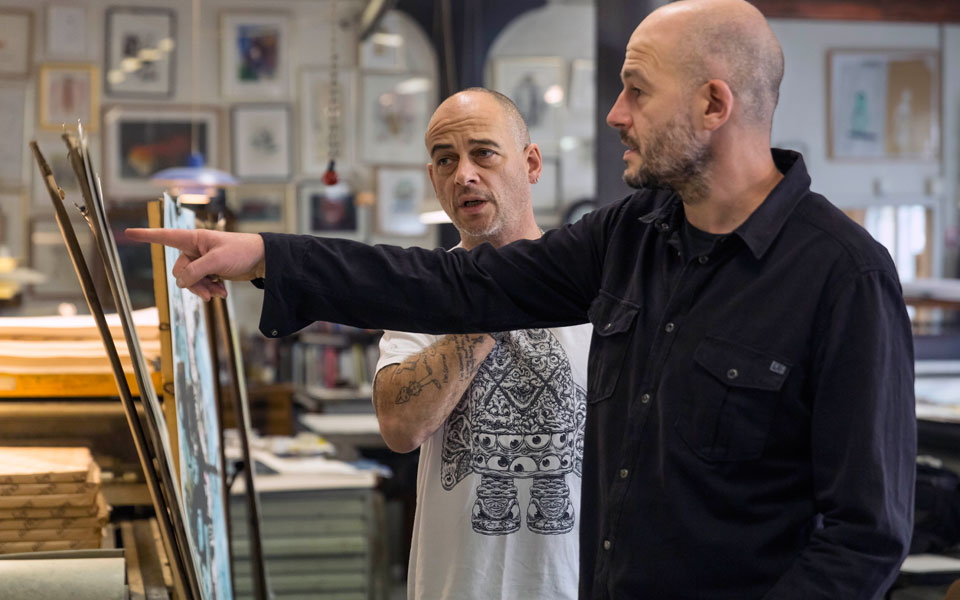
"It is always exciting when the door opens and a new artist walks into the workshop. What’s this one like? Someone radiating confidence and immediately taking charge of room, turning it into their personal work-space inferno? Or someone more apprehensive? Someone who is anxious about technique, but also at the prospect of collaborating with others on something as personal as their art? For the first type of artist, we have to get moving right away and print at a speed that will keep them from getting bored by the process.
For the other type, we have to sit down over a cup of coffee and help them understand that we are here to help them. We have to make sure they shed their polite restraint, so they won’t be reluctant to ask us to change the colour or to grind the stone yet again. This is just what we are here for: To assist them in their artistic process. It doesn’t matter if they change the colour 22 times; what matters is that they feel safe with the final result and are happy with it."
Rasmus Urwald, partner and Master Printer at Edition Copenhagen
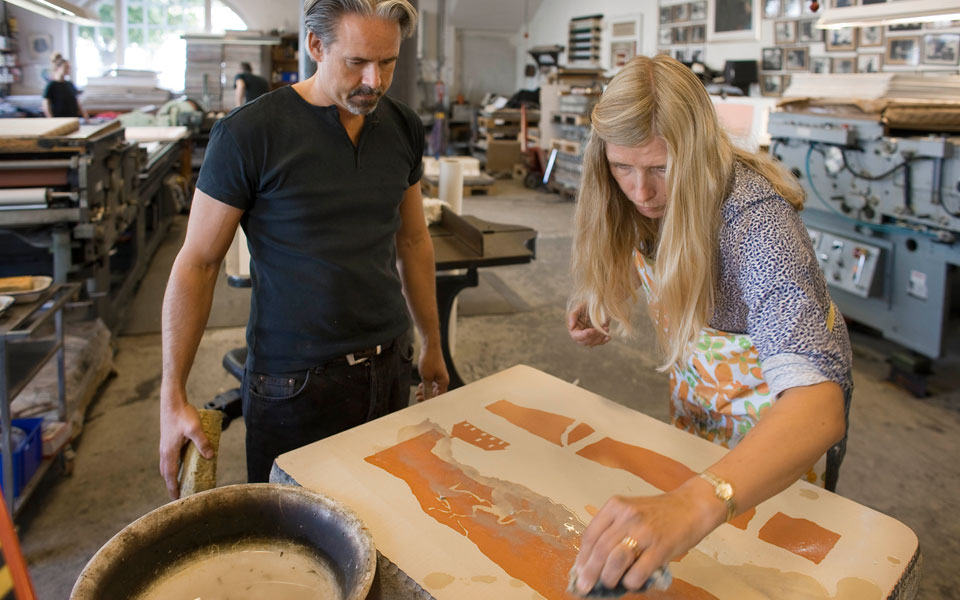
In 1796 Alois Senefelder invented the lithographic printing method. In Greek, lithos means stone - grafera means to draw. An original lithograph has been drawn by the artist directly on a slab of perfectly level and smooth limestone with lithographic tusche or a fatty crayon. This print is not a reproduction but an original print. A lithograph is an original print when the artist has been working directly on the printing surface. The stone is then etched with a solution of nitric acid and gum arabic, one of several processes making it possible to print from the stone. The artist chooses the colour and applies the ink to the stone with a roller to make a proof print.
At this point the artist can make corrections on the stone by etching away or adding elements, or changing colour nuances. When finished, a new proof print is printed. This stage is repeated until the artist achieves the desired result. The drawing is then printed a prescribed number of times. Once the printing process for this drawing is finished, the stone is ground down. This means that this particular form is erased and can never be printed again. If the artist is working with more than one colour, a new stone is prepared for each colour. The colours are transparent and where colours overlap, new nuances will appear. When the edition is finished the artist personally signs each print.
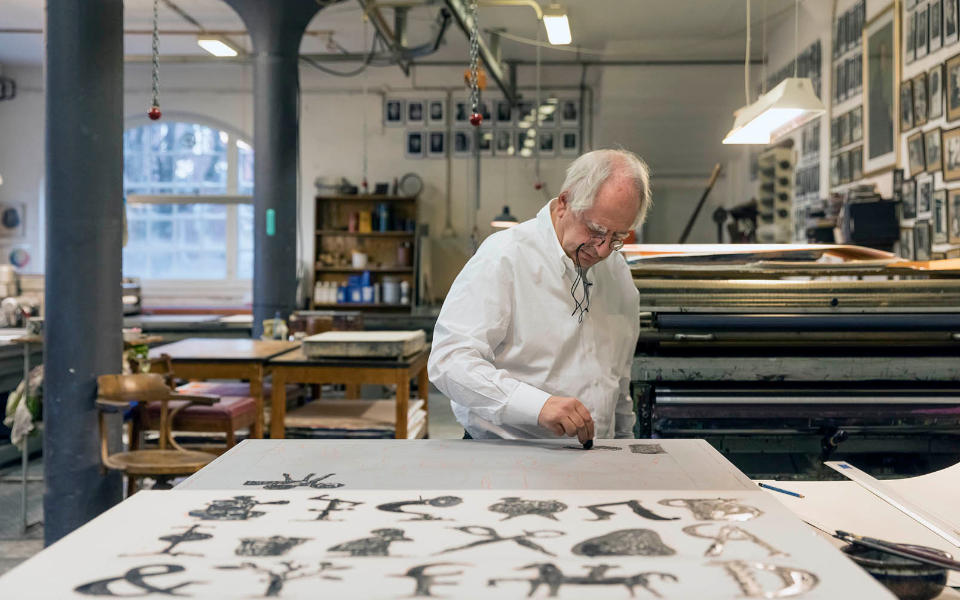
During the end of the Jurassic period (approximately 135 million years ago), the climate in the area we now call Europe was subtropical (well suited for dinosaurs). In Southern Germany – specifically in Solnhofen near Munich – the river, now flowing through the present day city of Ulm, opened into a lagoon in the Tethys Sea. At the bottom of this lagoon plant debris settled, became mixed with mud and was compressed into layers. These layers eventually solidified and resulted in the type of stone used for lithography. The stone contains lime and silica, a synthesis eminently suited for the fatty tusche, crayons and inks used in lithographic printing.
(There are, incidentally, many fossils in these stone layers: animals, birds and fish that over time died and sank into the mud. Here scientists have found the famous Archaeopteryx fossil. It was discovered shortly after Charles Darwin published On the Origin of Species (1859) and was thought to be from a transitional species – something between a dinosaur and a bird. The fossil was used to instantiate Darwin’s theory. Today Archaeopteryx is displayed in Berlin’s Natural History Museum.)
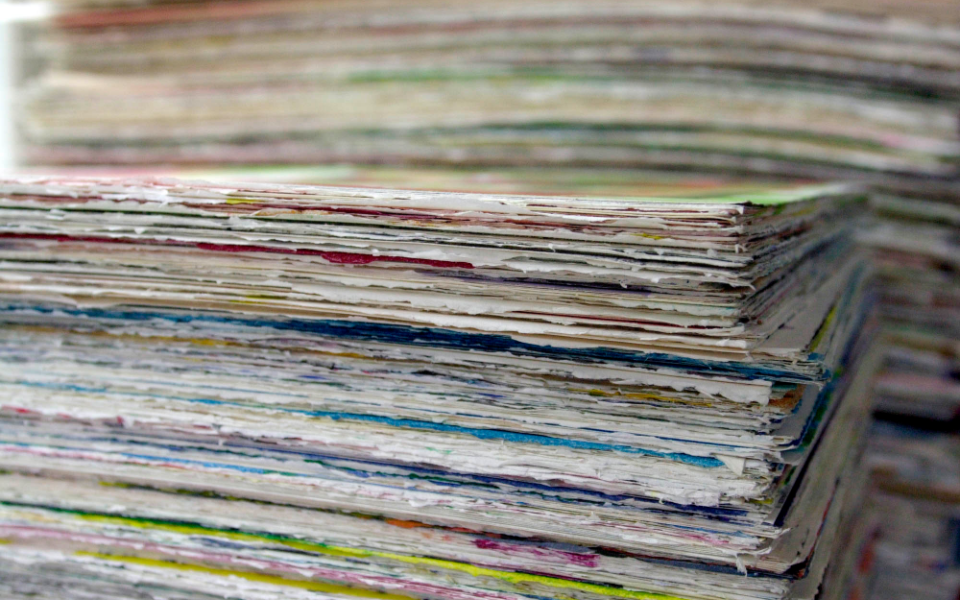
We print on acid free hand made deckle edge paper. It is made from cotton – not cellulose, which is the basis for conventional paper. This paper has a special structure that can absorb the printing colour and does not yellow with age as quickly as regular paper. Edition Copenhagen has for many years used paper from Velin d’Arches. The paper currently used in the workshop was developed through a collaboration between Edition Copenhagen and the Velin d’Arches paper mill. It is perfectly qualified for printing lithographs.
. The workshop’s own watermark is embossed in the paper along with that of the paper mill. Located in Epinal, France, the Arches’ paper mill has been in operation since 1492. Through the centuries many important documents and artworks have been written and printed on paper from Arches. It was the famous French painter Ingres, who collaborated with Arches to develop a paper suitable for artworks. An early example is the renowned landscapes produced during the course of Napoleon’s conquest of Egypt.
© 2023 Edition Copenhagen — Designed by DAN®
Insured shipment with UPS.
Delivery time ca. 2-7 working days.
Price ex. VAT:
EUR 67.-
(Please use our Danish webshop for orders in Denmark)
Insured shipment with UPS.
Delivery time ca. 2-7 working days.
Price ex. VAT:
Norway, Iceland & Greenland: EUR 95.-
United Kingdom: EUR 100.-
North America: EUR 175.-
Asia, The Middle East, South America & Africa: EUR 220.-
All payments inside EU are incl. VAT. IMPORTANT! The VAT rate depends on the destination country and will be added at checkout. Go to “Shipping and Terms” to see the full VAT rate list. All payments outside EU are ex. VAT. EU companies outside Denmark with an EU VAT number can be invoiced without VAT. (Please contact Edition Copenhagen).